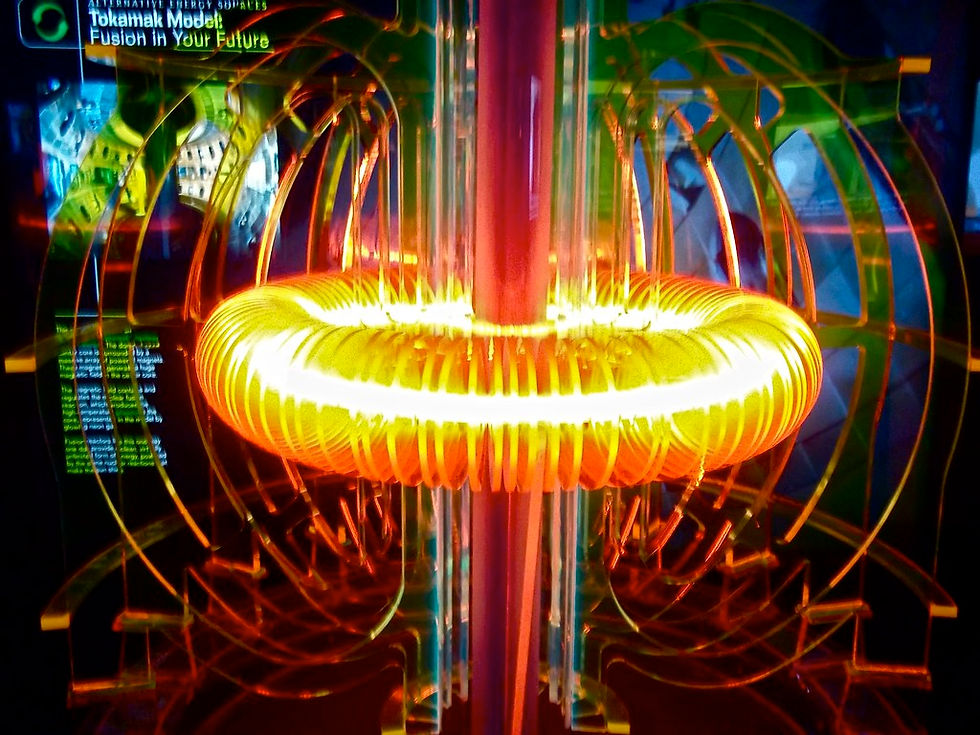How does Fusion work?
- Lucas Sebastian Maderna

- May 6, 2022
- 1 min read
Fusion is the process where two Hydrogen nuclei (specifically D-D or D-T*) fuse, producing four times the energy of fission, while not producing any nuclear waste. This is exactly what happens in our Sun right now. Unfortunately the conditions to reach nuclear fusion on earth are very difficult to reach, as the process needs constant pressure and a temperature of at least 15 million degrees Celsius, so that the electrostatic repulsion from the two nuclei can be contrasted, allowing them to fuse. “Ignition” is when fusion occurs so much that it becomes self-sustaining, this is what modern experimental fusion reactors are trying to reproduce, which I will be explaining, as well as the various private and government funded projects working on nuclear fusion.
*
D= Deuterium
T=Tritium
Information provided by the World Nuclear Association.

“Nuclear_fusion.gif” by “Someone” is marked with the Creative Commons Attribution-Share Alike 3.0 Unported



Great work I found it very interesting.
Very interesting Lucas, well done! Sounds all very complex but you made it easy to understand which is a great skill to have!
amazing research very clear eplanation with intersting picture
Very clear description. Teaching me something new as always
What a clear and concise explanation of nuclear fusion Lucas! It will be very interesting to see whether nuclear scientists are able to reproduce ignition making nuclear energy a real possibility for the future. I look forward to reading about the different private and projects working on nuclear fusion. Well done!